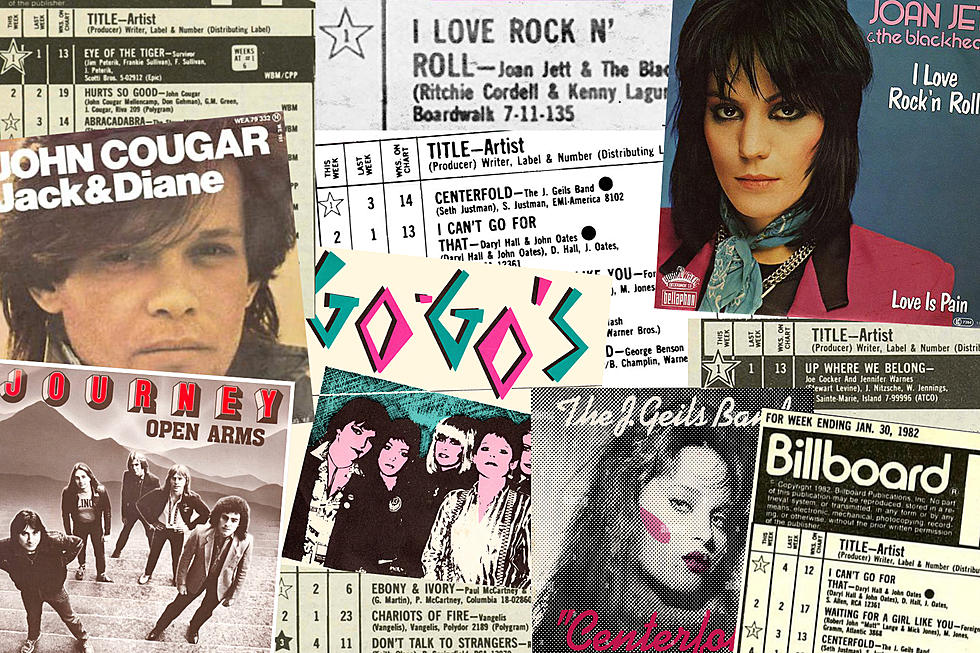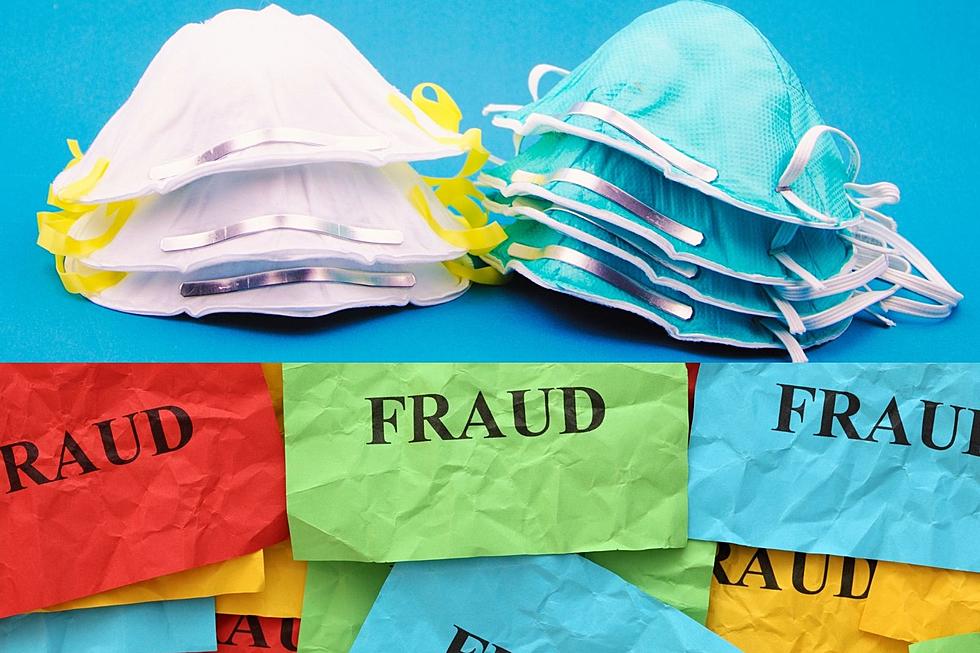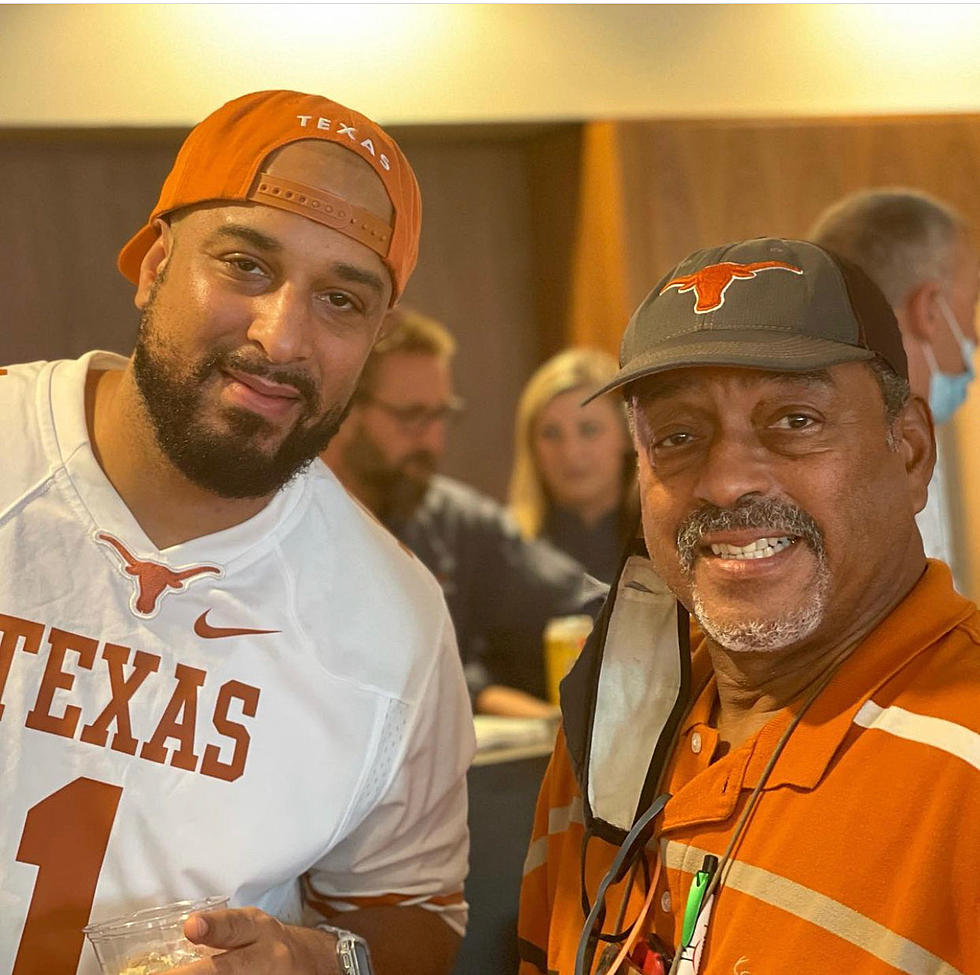
1982: The Last Year Rock Dominated the Pop Charts
Over the past 40 years, rock has gone from the unquestioned king of genres to a footnote in the hierarchy of mainstream music.
In 1982, a rock artist held the No. 1 song in the U.S. for 44 of the year’s 52 weeks. That amounts to just less than 85 percent of the year, a staggering figure that showcases just how embedded rock was in popular culture at the time.
There are plenty of ways to split hairs on this — Daryl Hall and John Oates and Men at Work were pop-leaning artists, while Paul McCartney’s collaboration with Stevie Wonder (“Ebony and Ivory”) was decidedly pop as well — but that doesn’t change the fact that rock artists were the dominant musical force.
Joan Jett & the Blackhearts' “I Love Rock ‘n Roll” spent seven weeks at No. 1 in 1982, as did McCartney’s duet with Wonder. The J. Geils Band (six weeks with “Centerfold”), Survivor (six weeks with “Eye of the Tiger”) and John Mellencamp (four weeks with “Jack & Diane”) also enjoyed extended runs in the top spot.
Watch Joan Jett & the Blackhearts' 'I Love Rock 'n Roll' Video
While no year matched 1982 for rock dominance, the rest of the decade was generally good for the genre. Throughout the ‘80s, on average rock artists spent roughly half the year atop the chart, with the low point being 1989, when only 22 weeks featured a rock artist at No 1.
Those numbers fell off a cliff as the '90s began. With the spandex bubble bursting on hair metal, many former powerhouse acts found it difficult to garner attention for their newest work. Despite the seismic cultural shift provided by grunge, none of the new subgenre’s artists were able to top the Billboard Hot 100. Neither Nirvana nor Pearl Jam — the two biggest and most commercially successful grunge acts — scored a No. 1 song; “Smells Like Teen Spirit,” arguably the era's definitive song, made it to only No. 6.
There were still occasional rock breakthroughs throughout the ‘90s, like Meat Loaf’s “I’d Do Anything for Love (But I Won’t Do That),” Bryan Adams’ “Have You Ever Really Loved a Woman” and Aerosmith’s “I Don’t Want to Miss a Thing.” There was also the phenomenon of Elton John’s updated “Candle in the Wind,” which, in the wake of Princess Diana’s death, spent a total of 14 weeks at No. 1. Still, the rock chart-toppers were few and far between. And though the decade ended with Santana’s 1999 hit “Smooth” dominating the airwaves, it became clear the genre had fallen behind rap and pop among mainstream listeners.
Watch Meat Loaf's 'I'd Do Anything for Love (But I Won't Do That)' Video
While the drop from the ‘80s to ‘90s was significant, rock hits got even sparser after the turn of the millennium. Thirteen of the past 20 years (2001-21) did not feature a rock song that hit No. 1 on the Billboard Hot 100. Even those that did were either extremely pop-leaning (Coldplay, Fun.), huge one-hit wonders (Gotye, Plain White T’s) or bands people want to forget (Crazy Town). If you want to drill down and filter out such alt-pop artists as Billie Eilish, Lorde and those already mentioned, the last traditional rock song to hit No. 1 was Nickelback's 2001 single “How You Remind Me."
Part of the reason can be attributed to the way the chart is assembled. Billboard, which curates the national charts, traditionally used a formula that combined sales numbers and radio airplay. For decades these numbers were skewed, as they generally relied on music retailers to record accurate accounts for the number of units they sold — a process that made human error and fraud commonplace. In 1991, Nielsen SoundScan — a method that tracked purchases via computerized cash registers across the country — was introduced, resulting in a much more accurate sales picture.
Similarly, radio, which for decades relied on participants using handwritten journals to note their listening habits, switched to the Portable People Meter (PPM) around 2007. The small device senses what its user is listening to and automatically records the data, once again increasing accuracy while significantly lowering the likelihood of fraud or error.
These technological advancements, along with the later adoption of streaming numbers into Billboard’s charts equations, undoubtedly affected rock’s footprint. It’s no coincidence that rock No. 1’s fell precipitously after their introductions. Still, the long trend cannot simply be chalked up to new means of recording data.
Watch Green Day's 'Boulevard of Broken Dreams' Video
Rock acts such as Linkin Park, Green Day, Evanescence and Blink-182 all boast albums among the best-selling in the 21st century and had songs peak within the Top 6 on the Billboard Hot 100, yet none was able to reach No. 1. Twenty One Pilots’ 2015 LP, Blurryface, was the best-selling rock release of the '10s, but its highest-charting single, "Stressed Out,” peaked at No. 2.
Charts aren't the be-all, end-all of music. Sales figures, streaming numbers and concert attendance suggest that rock fans are still as passionate as always. And given the cyclical tendencies of pop culture, it seems likely that a rock resurgence could come at any moment. Rock isn’t dead, and it won't ever die. But we probably won’t ever see another year like 1982.
50 Albums Turning 50 in 2022
More From KTEM-AM










